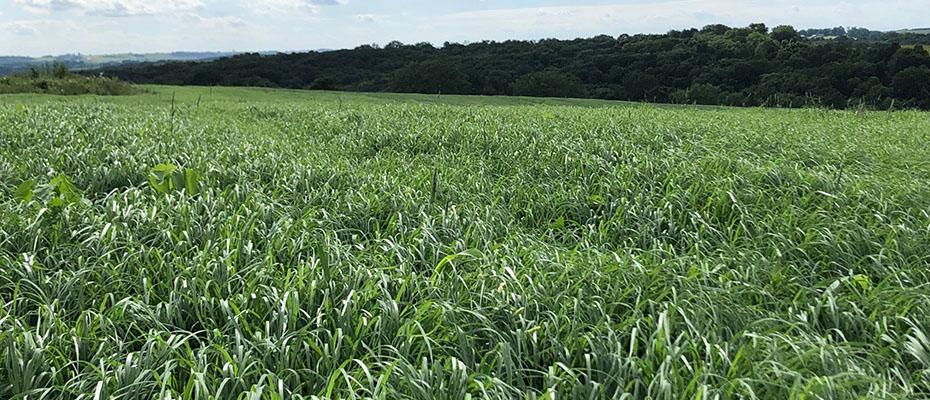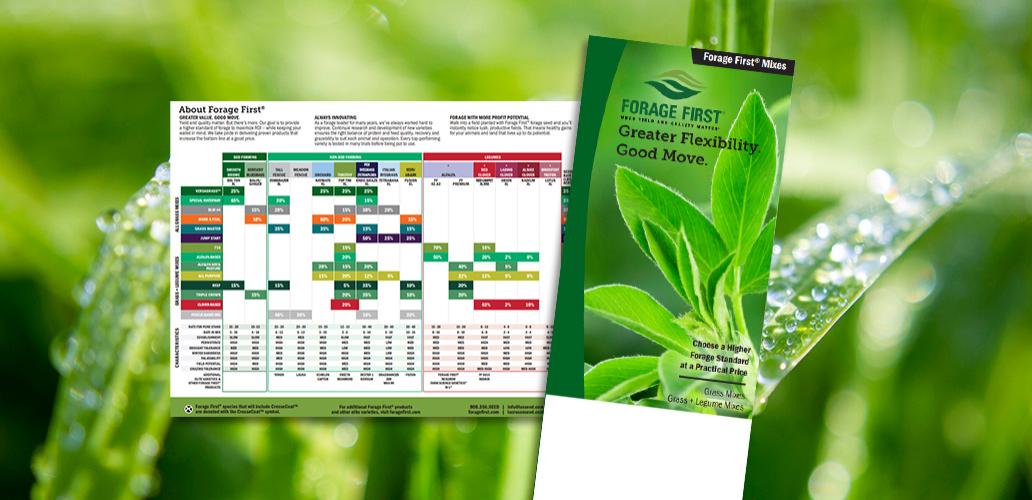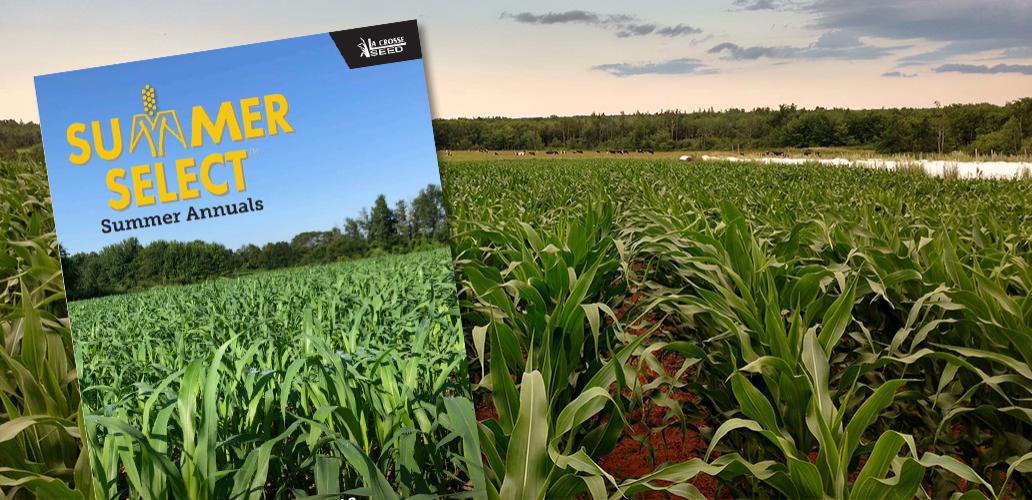Forage First Guide I Summer Select Guide
Greater Value. Good Move. Yield and quality matter. But there’s more. Our goal is to provide a higher standard for forage to maximize ROI– while keeping your wallet in mind. We take pride in delivering proven products that increase the bottom line at a good price.

Teff Grass cover crops are a warm season annual grass native to Ethiopia. Teff Grasses are fine stemmed with large crowns and many tillers. Roots are shallow and develop a massive fibrous root system. Plant height at maturity is typically 3-4 ft., but varies depending on variety and environmental conditions. When harvested at the proper stage, crude protein will normally be in the 15%-20% range. Teff Grass has an open panicle type seed head. There are approximately 1.3 mil. seeds/lbs. When seed is coated at 50% there are approximately 650,000 seeds/lbs.
CHARACTERISTICS:
Non-Forage Benefits:
1 = Poor; 5 = Excellent
Compaction Alleviation: 1
Weed Suppression: 3
Biomass Production: 3
Erosion Control: 4
Disease/Pest Control: 3
Pollinator/Beneficials: 2
P & K Cycling: 3
Ease of Establishment: 4
Nitrogen Fixer/Scavenger: Scavenger
Nutritional Value:
Values Vary Greatly Depending on Maturity
Crude Protein: 18
NEL¹ Mcal/lb.: .60
ADF%²: 33
NDF%³: 57
TDN: 64
DM Tons/Acre: 3-5
Days to First Harvest: 35
Days to Next Harvest: 25
¹- Net Energy for Lactation = Energy available after subtracting digestive and metabolic losses
²- Acid Detergent Fiber = Low values mean more digestible
³- Neutral Detergent Fiber = Low values mean cows can eat more
Ranking (Good, Better, Best):
Graze: Not Rated
Baleage: Good
Chop: Best
SEEDING:
Planting Time:
May-July
Seeding Rate:
Mono (lbs./acre): 8-12
Mix (lbs./acre): –
Forage (lbs./acre): 8-12
Aerial (lbs./acre): NR
Seeding Info:
Carbon/Nitrogen Ratio (C:N): Vegetative-20:1
Seeding Depth (in./with drill): 1/4
Seeds/lb.: 1,300,000
Bulk Density (lbs./ft.³): –
Aerial Application Rate: Not Rated
Germination Soil Temp.: 65 F
USDA Hardiness Zone: Frost
Days to Emergence: 3-5
MANAGEMENT:
Uses
Teff is mainly utilized for hay in pure stands or as an emergency hay crop. Other uses include grazing, silage, erosion control and green manure.
Establishment
Teff is easy to establish due to its rapid germination (3-6 days) provided seed is planted in a firm seedbed and soil temperature is 65°F or higher. Seeding rates are 8-12 coated lbs./acre or 4-6 raw lbs./acre at a seeding depth of 1/8-1/4 in. Planting deeper will usually result in a complete stand failure. Stand failures may also occur when planting after small grains unless the stubble is thoroughly incorporated into the soil. Initial growth is slow until a good root system has been established.
Considerations
In general, 50 lbs. of nitrogen/acre every year at planting will be adequate for good forage production. Small amounts of nitrogen may be needed after each cutting, however too much nitrogen causes severe lodging. Soil testing is important since teff needs adequate phosphorous, potassium and sulfur for optimum growth. For optimum forage quality, teff should be harvested in the pre-boot to early boot stage, approximately 45-50 days after planting at a cutting height of 3-4 in. Harvest regrowth in 30-45 days depending on environmental conditions.
Tips
Nitrate Toxicity is common when fertility or manure applications are followed by a period of drought or stress. Cut plants do not lessen in their nitrate levels as they cure. If high levels are suspected, forage should be tested for a period of a few weeks until levels subside. Though often linked to summer annual grasses, increased nitrate levels can show up in most cover crops and forages.
- Nitrates are concentrated more in the lower stalk– raising cutting height can reduce the risk
- When a stressful drought precedes a moisture event, it is recommended to delay harvest by 1-2 weeks
- Consider split applications of nitrogen (especially useful on summer annuals) to decrease nitrate accumulations
Prussic Acid poisoning can occur when feeding forage sorghums after periods of drought or other stress, including frost. Toxic levels dissipate usually after 2-3 weeks and will further decrease when ensiled. Prussic acid is most concentrated in new growth, so sorghum forages should not be grazed until they are at least 18 in. tall. Storing hay or silage for at least 30 days generally dissipates the concern.

.png)
.png)


.png)










